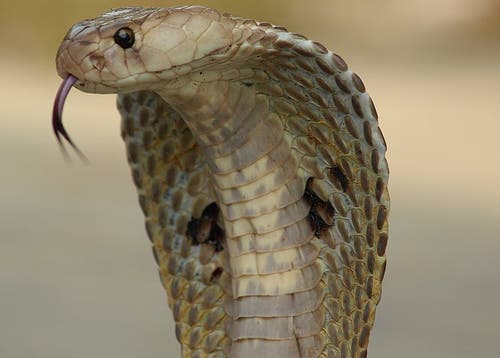Few snakes are as venomous as the Indian cobra. The infamous Naja naja has inspired folklore (and fear) for as long as man can remember.
Now, researchers have uncovered the genetic secrets of the Indian cobra, and the medicinal potential of this is huge.

Snake biting is probably the biggest health crisis you’ve never heard about, taking a huge toll in some parts of the world. The exact number of snake bites is unknown, but an estimated 5.4 million people are bitten by snakes each year — with up to 2.7 million of these being venomous. Venomous snakebites cause over 100,000 fatalities, and three times as many amputations and permanent disabilities. Surprisingly, our ability to deal with snake bites has progressed very little throughout the years.
In 1891, a French physician named Albert Calmette opened up a clinic in what was then Saigon (now Ho Chi Minh), Vietnam. He wanted to develop vaccines for rabies and smallpox, but he was shocked to see how much harm cobra bites can do. Month after month, the physician would treat rotten muscles and broken down tendons, which would often require amputations or even more dramatic interventions.
He started studying the venom and injected small quantities of it into rabbits. After a while, he found that if the quantities were low enough, the rabbits would be fine — and even more, would produce a serum with a protective effect. Thus, the first antivenom was born. After a while, he experimented with the same approach on horses and donkeys, from which more blood could be drawn.
Things haven’t changed that much since Calmette’s time. Antivenom is produced in a surprisingly similar way, and to a large extent, we are still dependent on milking snakes and injecting venom into horses and then drawing antibodies from them. But this might soon change.
After two years of work, an international team has unveiled all of the Indian cobra’s chromosomes related to venom production, the largest assembly of the snake’s genome. This contains information that researchers never had access to, and can shed light on the recipe for the dangerous venom cocktail. With this in hand, the development of effective, humanized, and scalable venom is in sight.
The reason why this proved to be so difficult is that Indian cobra venom is not just one poison: it contains multiple toxins that act together on the snake’s victim. In the new paper, researchers described 19 genes that are key to producing this venom. This is the first time that a link between these toxins and the genes that encode them has been drawn, and this is the key to unlocking modern antivenom production
The study “The Indian cobra reference genome and transcriptome enables comprehensive identification of venom toxins” was published in Nature Genetics.






